
Mutual Funds and Strategic Sample Blending — Not as Different as You’d Think
July 10, 2023
Intellicast S6E19 — A Midsummer Market Research News Update
July 20, 2023It seems like everyone and their mother is talking about artificial intelligence, specifically OpenAI’s ChatGPT… but are they actually? When the chatbot was released on November 30th, 2022, it had 1 million+ users in 5 days. In our latest round of research-on-research, we wanted to learn more about brand awareness of ChatGPT.
Overall, less than half of respondents are aware of ChatGPT.

Income
When looking at responses by income, we see that the higher income a person has, the more likely they are to be aware of ChatGPT. In fact, people with incomes of $100,000+ are 24% more likely than those with incomes under $20,000 to be aware of ChatGPT.
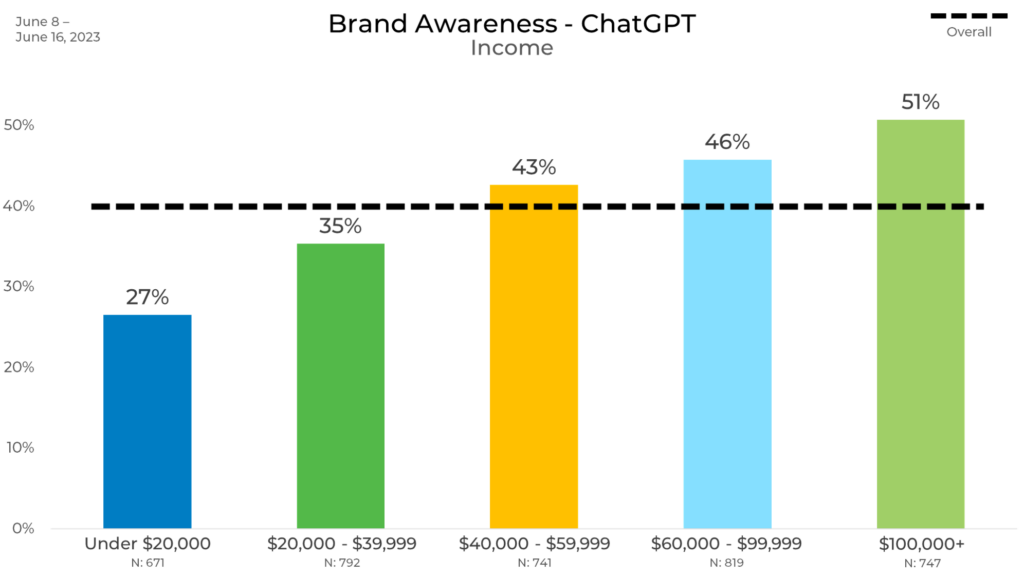
Gender
When looking at response by gender, we see that males are 14% more likely than females to be aware of ChatGPT.

If we look a little closer at gender and cross reference it with income, we see that male awareness of ChatGPT increases with income except for those with incomes of $100,000+ where we see awareness decrease 7% from the previous income group of $60,000-$99,999. Female awareness also increases with income except for the $60,000-$99,999 group where it decreases from the previous income group. We also see a 22% difference between males and females in the $60,000-$99,999 income group. However, males and females with incomes of $100,000+ have the same awareness of ChatGPT.
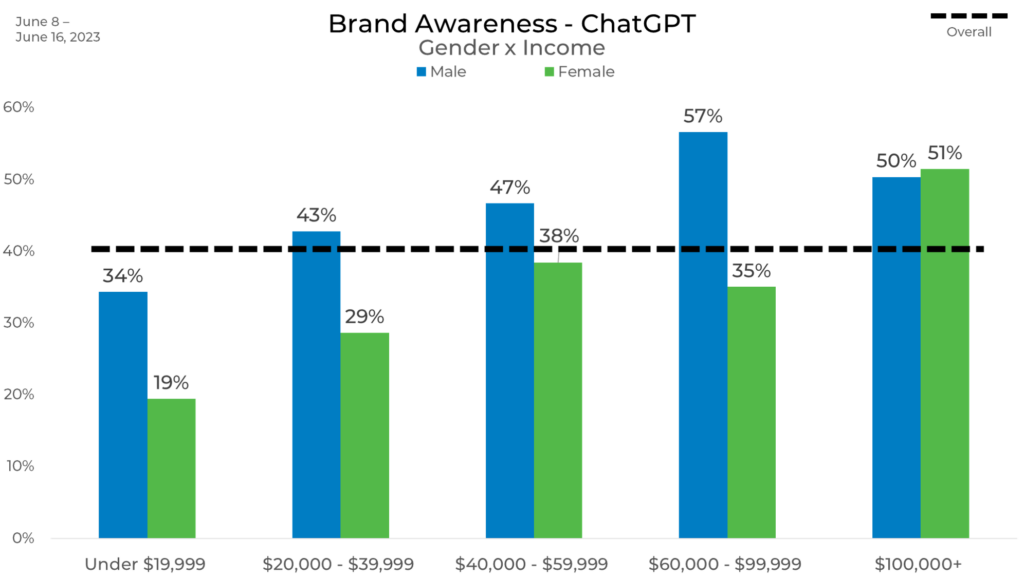
Region
By region, we found that the West and Northeast are the most likely to be aware of ChatGPT. The South is the least likely to be aware (10% less likely than the West and 8% less likely than the Northeast.)
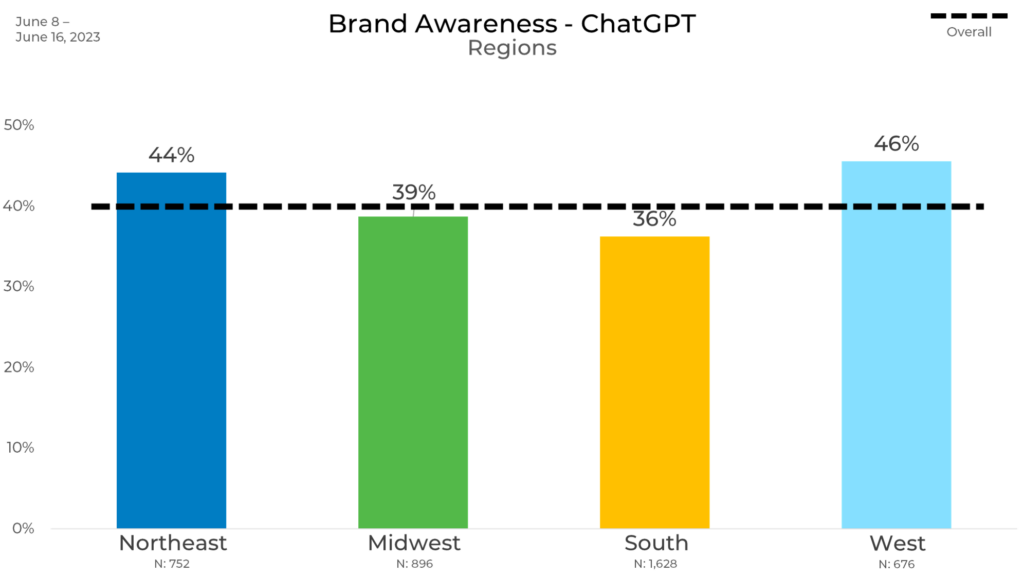
Age
We also looked at responses by age and found minor differences across age except for those aged 63+ who are 9% less likely than all other age groups to be aware of ChatGPT. This makes sense as older respondents may be less likely to adopt new technology or have use for artificial intelligence.
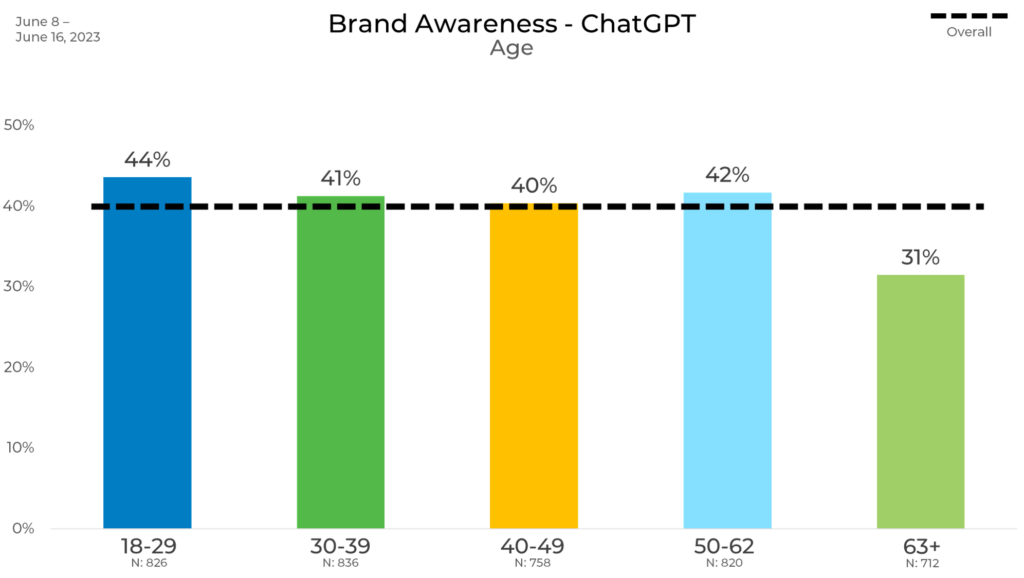
If we cross reference region with age, we see that all regions have a decrease in awareness with age. We see up to a 14% difference in awareness of ChatGPT by region and age as seen in the Midwest. Respondents that are aged 50+ in the West are more aware of ChatGPT than any age group in the South which makes sense since we know the South has the least awareness of ChatGPT.
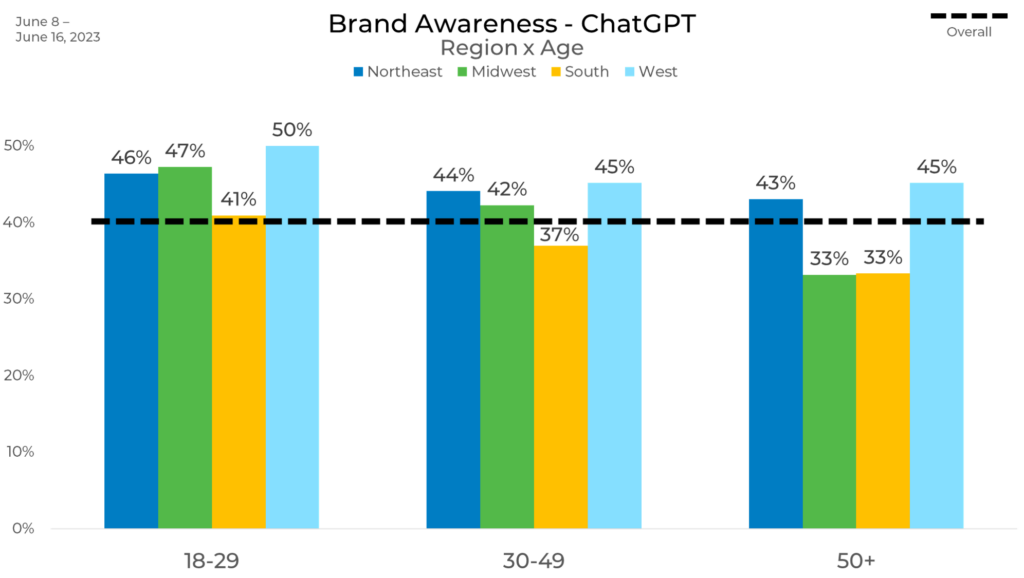
Political
When it comes to political affiliation, we see that those who identify as Democrat or Independent are the most likely to be aware of ChatGPT (8% more than Republicans.) People who identify as “Other/None of these” are the least likely to be aware (7% less than Republicans and 15% less likely than Democrats and Independents.)
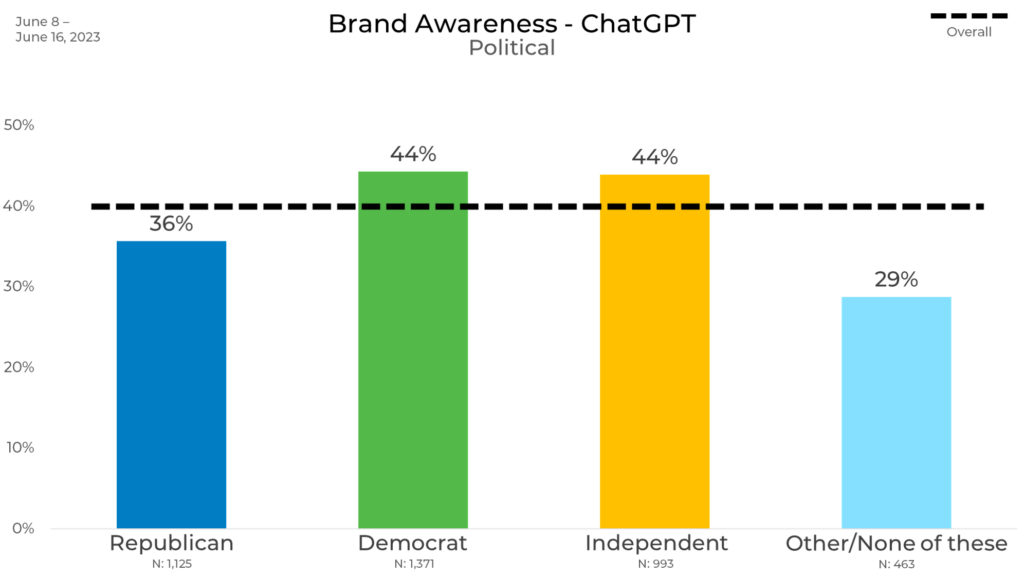
Ethnicity
We also looked at response by ethnicity. Here we see that Asian or South Asian respondents are the most likely to be aware of ChatGPT (18% more likely than any other ethnicity.) Hispanic/Latinx respondents are the least likely to be aware (25% less likely than Asian or South Asian respondents.)
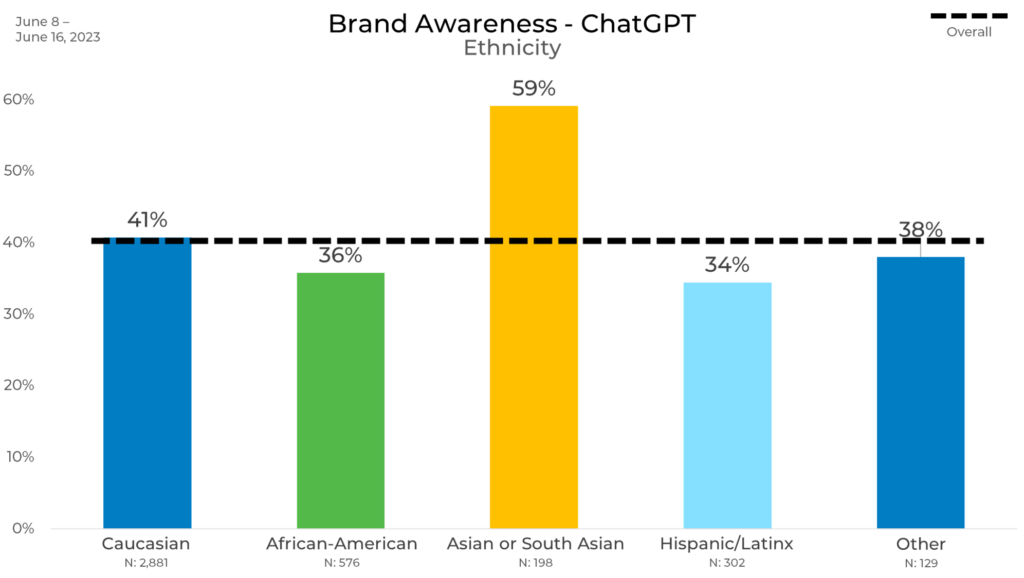
Panel
Finally, we looked at responses by panel. We see up to an 18% difference based on panel. We also see differences up to 11% lower and 7% higher than the overall average. Panel B is significantly less likely to be aware of ChatGPT than the other panels used. This means that if a researcher only used Panel B on their study, they might think way less people are aware of ChatGPT than actually are which could impact their business decisions.
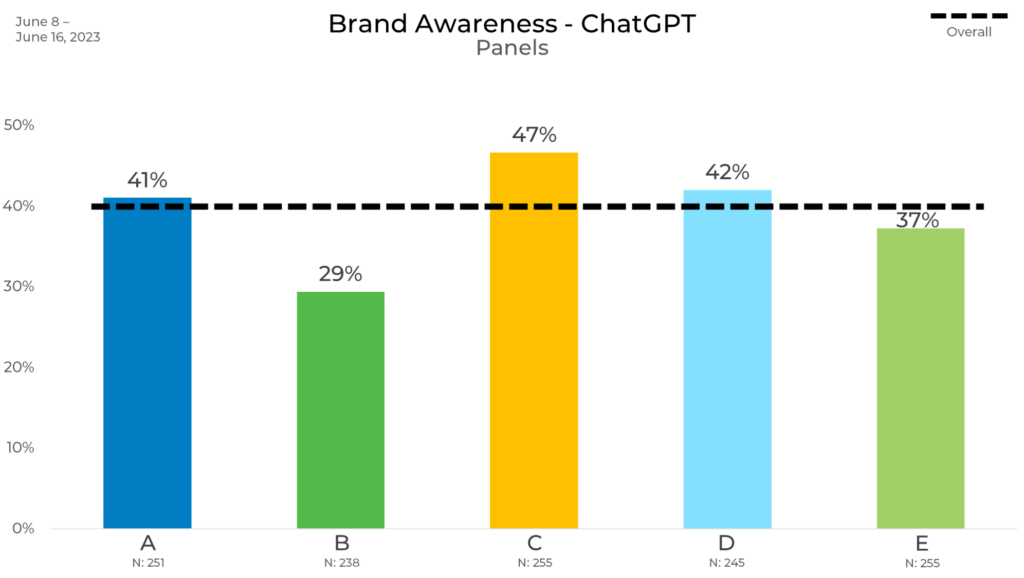
As we see in this blog, brand awareness varies greatly by both demographic and panel. In fact, through our research-on-research, we’ve found that brand awareness can vary up to 25 percentage points based on panel selection. These differences can be due to a variety of reasons such as incentive, panel management, and more. This can have a significant impact on your data. This is why strategic sample blending is the best practice to ensure any changes in your data are due to shifts in the market, not inconsistencies in your data.
Learn more about panel differences in The Sample Landscape: 2023 Edition!




